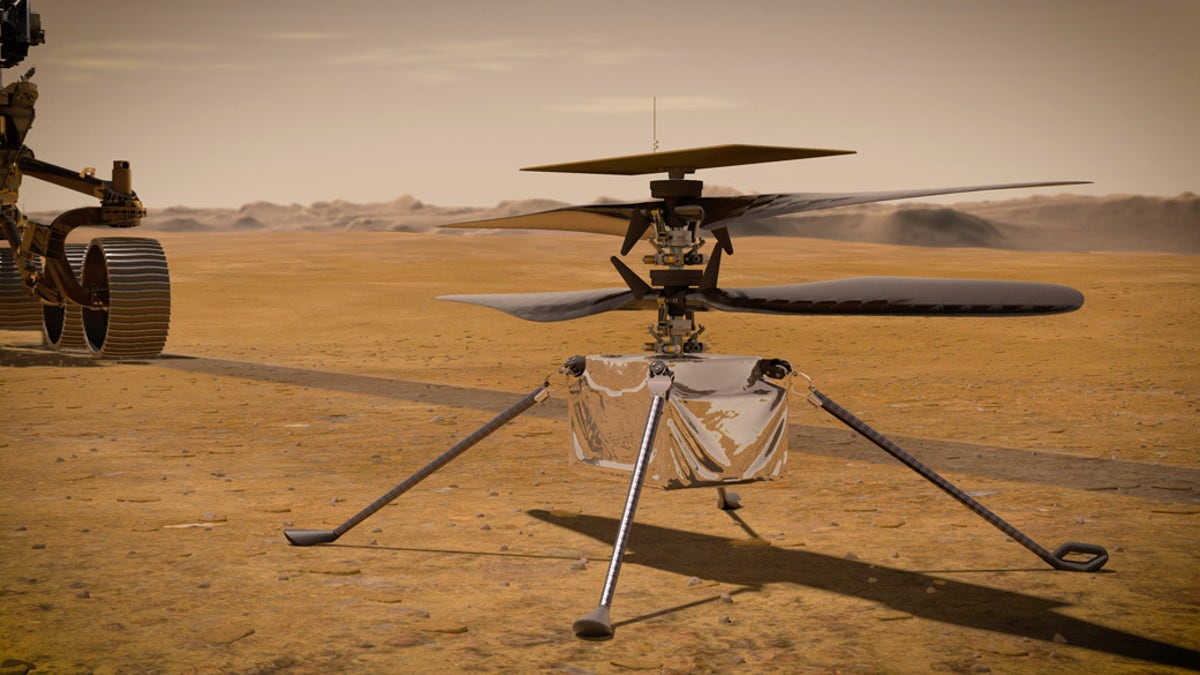Fox News Flash top headlines for August 17
Fox News Flash top headlines are here. Check out what's clicking on Foxnews.com.
NASA surpassed a "big milestone" on its latest mission to Mars, as the space agency was successfully able to power up the helicopter attached to the Perseverance rover, known as Ingenuity.
The six lithium-ion batteries that power Ingenuity were powered up and charged on Aug. 7, NASA said in a statement. It took eight hours for Ingenuity's batteries to be charged to 35 percent.
"This was a big milestone, as it was our first opportunity to turn on Ingenuity and give its electronics a 'test drive' since we launched on July 30," said Tim Canham, the operations lead for Mars Helicopter at NASA's Jet Propulsion Laboratory, in the statement. "Since everything went by the book, we'll perform the same activity about every two weeks to maintain an acceptable state of charge."

In this illustration, NASA's Ingenuity Mars Helicopter stands on the Red Planet's surface as NASA's Perseverance rover (partially visible on the left) rolls away. (Credit: NASA/JPL-Caltech)
HOW IS THE MARS PERSEVERANCE ROVER GETTING TO THE RED PLANET?
Ingenuity receives its power from the Perseverance rover's nuclear energy system, known as a Multi-Mission Radioisotope Thermoelectric Generator, provided by the Department of Energy.
The 'copter, which weighs 4 pounds, will let researchers understand the viability and potential of heavier-than-air vehicles on the Red Planet.
Assuming Perseverance successfully touches down on the Martian surface, scheduled to take place on Feb. 18, 2021, Ingenuity will take a few test flights. Following successful deployment, Ingenuity will be powered by its solar panel and not rely on the rover for power.
"This charge activity shows we have survived launch and that so far we can handle the harsh environment of interplanetary space," said MiMi Aung, the Ingenuity Mars Helicopter project manager at JPL. "We have a lot more firsts to go before we can attempt the first experimental flight test on another planet, but right now we are all feeling very good about the future."
NASA'S NEXT MISSION TO MARS WILL HONOR THOSE FIGHTING AGAINST COVID-19
The Perseverance rover launched into space atop a United Launch Alliance Atlas V rocket at 7:50 a.m. on July 30. Its mission is expected to last at least one Martian year or about 687 days.
While on the Red Planet, the rover will perform a variety of different functions, including looking for evidence of ancient life.
NASA’s longer-term goal is to send a manned mission to Mars in the 2030s.
CLICK HERE TO GET THE FOX NEWS APP
Fox News' James Rogers contributed to this story.





















